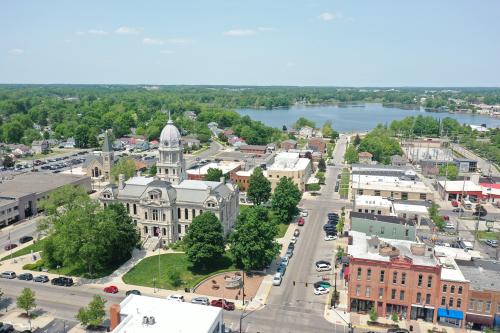Bruce Katz presented a speech on demographic shifts in the country’s largest 100 metropolitan areas and how various leaders, including those in Seattle, will meet the policy challenges of a changing nation.
Introduction:
Today, I would like to present our findings from a major research initiative at the Metropolitan Policy Program, which is accompanied by an interactive website: the State of Metropolitan America. Our report examines the demographic trends that have affected the top 100 metropolitan areas so far this decade, covering the year 2000 through the year 2008. We find a nation in demographic transformation along five dimensions of change.
Watch video of the speech on the Seattle Channel »
We are a growing nation. Our population exceeded 300 million back in 2006 and we are now on our way to hit 350 million around 2025.
We are diversifying. An incredible 83 percent of our growth this decade was driven by racial and ethnic minorities.
We are aging. The number of seniors and boomers exceeded 100 million this decade.
We are selectively educating. Whites and Asians are now more than twice as likely to hold a bachelors degree as blacks and Hispanics.
We are a nation divided by income. Low-wage workers saw hourly earnings decline by 8 percent this decade; high wage workers saw an increase of 3 percent.
With this background, I will make three main points today.
First, America’s top 100 metropolitan areas are on the front lines of our nation’s demographic transformation. The trends I’ve identified—growth, diversity, aging, educational disparities, income inequities—are happening at a faster pace, a greater scale and a higher level of intensity in our major metropolitan areas.
Second, the shape and scale of demographic transformation is profoundly uneven across metropolitan America. This variation only partially reflects the traditional division of our country into regions like New England or the Middle Atlantic or the Mountain West. Rather a new “Metro Map” of the nation is emerging that unites far flung communities by their demographic realities rather than their physical proximity.
Finally, demographic transformation requires action at both the macro and metro scale. The federal government and the states need to lead where they must to address the super-sized challenges wrought by fast change. Metropolitan areas must innovate where they should in ways that are tailored to their distinct challenges and opportunities. And the geography of transformation at the metro scale requires new institutions and ways of governing.
These policy and institutional changes will not be easy.
But let’s remember one thing. In the global context, the United States is a demographically blessed nation. Established competitors like Japan, Britain and Germany are either growing slowly or actually declining; rising nations like China remain relatively homogenous.
In a fiercely competitive world, our growth and diversity may be America’s ace in the hole.


Commentary
The State of Metropolitan America: Metros on the Front Lines of Demographic Transformation
October 18, 2010